INFOGRAPHICS
Infographics (Information Graphics) are visual representations of data, information, or knowledge that tell a story through visual communication.
Copy and paste the code to embed the Infographics in your websites and blogs or download as a .JPG, .PNG, or .PDF and share in emails, newsletters, and across social media channels. Infographics are also available on the CDC Healthy Schools Pinterest board.
Chronic Health Conditions
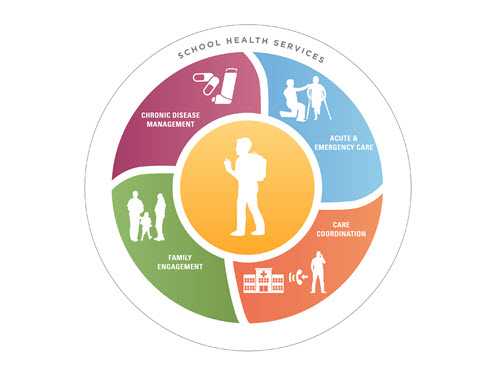 Click to Enlarge PDF [PDF – 466 KB] | JPEG | PNG |
For children who have chronic health conditions, having access to student health services is critical to help them with daily management, as well as for acute or emergency care. Family engagement, care coordination, and communication with the family’s health care provider are all essential components to helping students stay healthy and ready to learn.
|
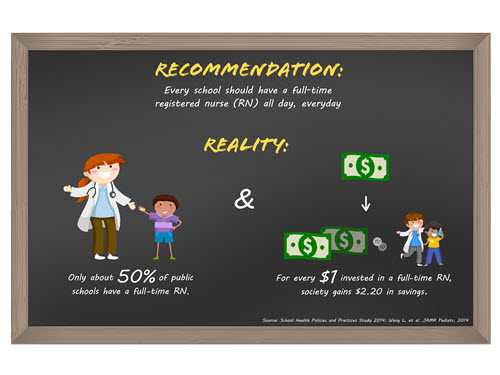 Click to Enlarge PDF [PDF – 578 KB] | JPEG | PNG |
The National Association of School Nurses states that every school-aged child deserves a registered nurse, and every school should have a full-time school nurse all day, every day; however, many schools across the United States do not meet this recommendation.
|
Health and Academics
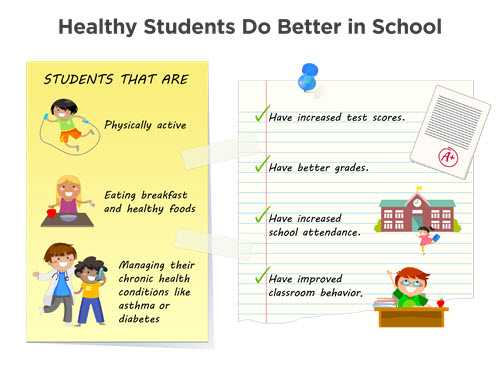 Click to Enlarge PDF [PDF – 648 KB] | JPEG | PNG |
Health and learning are strongly connected. Evidence supports that healthy students perform better in school. For example, the connection between students being physically active, eating healthy foods, and managing their chronic health conditions, and improved test scores, grades, school attendance, and classroom behaviors, such as being focused and not getting into trouble, is supported by research.
|
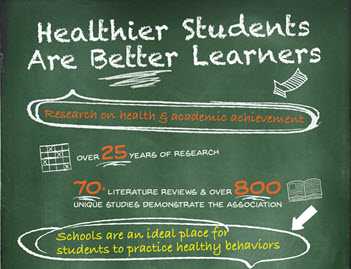 Click to Enlarge PDF [PDF – 343 KB] | JPEG | PNG |
Healthy students are better learners. There have been over 70 literature reviews, with over 800 unique studies, demonstrating this link between healthy behaviors and outcomes and improved academic achievement. There also have been over 100 articles that show that health programs delivered in schools improve health and academic behaviors. Schools are an ideal place to teach children and adolescents about health. There are over 130,00 schools in the US that reach over 78 million students.
|
Nutrition
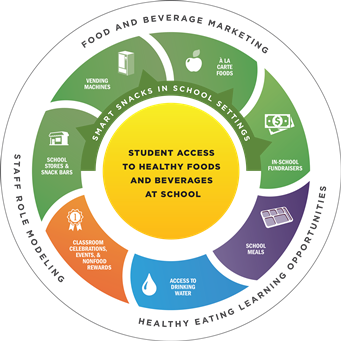 Click to Enlarge PDF [PDF – 5.5 MB] | JPEG | PNG |
The CDC recommends that schools implement policies and practices to create a nutrition environment that supports students in making healthy choices by providing them with access to healthy and appealing foods and beverages, consistent and accurate messages about healthy eating, and opportunities to learn about and practice healthy eating.
|
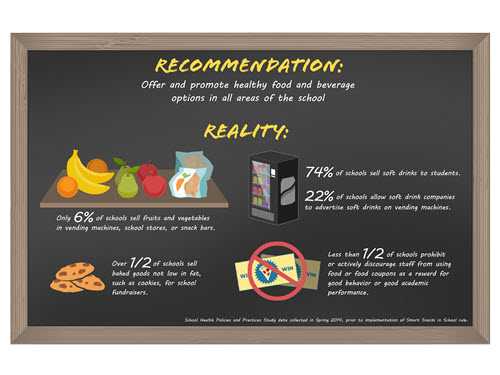 Click to Enlarge PDF [PDF – 581 KB] | JPEG |PNG |
The CDC and other national organizations recommend that schools do the following: provide a quality school meal program; ensure that students have only appealing, healthy food and beverage choices offered outside of the school meal program; market healthy foods and beverages; and use fundraising activities and student rewards that support health. The goal is to ensure that students have access to healthy food choices during the school day and messages that reinforce these choices. However, there is still much work to be done.
|
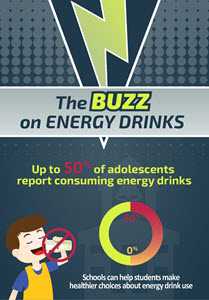 Click to Enlarge PDF [PDF – 746 KB] | JPEG | PNG |
Energy beverages are associated with health concerns including dehydration, irregular heartbeat, and insomnia, and should not be promoted in schools. Children aged 12–18 should not consume more than 100 milligrams of caffeine/day. Parents, teachers, and other school staff can educate students about the dangers of these drinks.
|
Physical Education and Physical Activity
 Click to Enlarge PDF [PDF – 527 KB] | JPEG | PNG |
The CDC and other national organizations recommend a comprehensive, school-wide approach to physical activity that provides opportunities for students to be physically active before, during, and after the school day. A Comprehensive School Physical Activity Program (CSPAP) has five components: physical education, physical activity during school, physical activity before and after school, staff involvement, and family and community engagement.
|
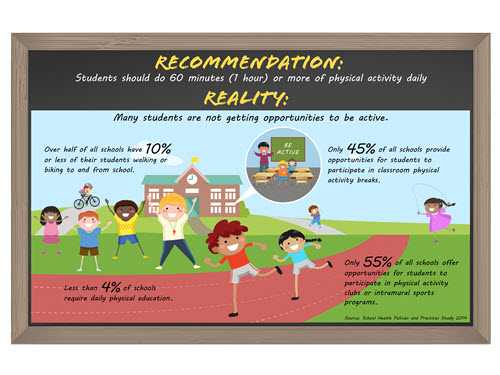 Click to Enlarge PDF [PDF – 731 KB] |JPEG | PNG |
The federal Physical Activity Guidelines for Americans recommends that children and adolescents should do 60 minutes (1 hour) or more of physical activity daily. However, most students are not meeting this recommendation, and many schools are not providing opportunities to help students be more physically active to meet this recommendation.
|
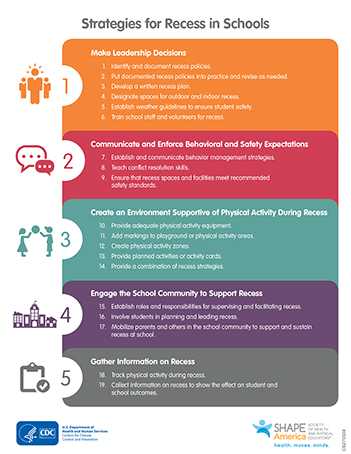 Click to Enlarge PDF [PDF – 108 KB] |JPEG | PNG |
There are 5 broad strategy categories for schools to consider to improve recess. Each category includes strategies that can be implemented by school staff or groups in the school that are responsible for leading recess. A total of 19 strategies have been identified under the five categories. These strategies are an integral part of recess planning and should increase physical activity, positive behavior during recess, and improve behavior and engagement in the classroom.
|
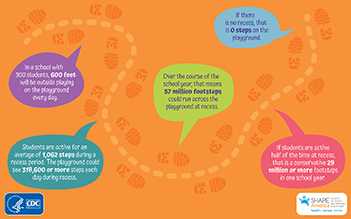 Click to Enlarge PDF [PDF – 161 KB] |JPEG | PNG |
Recess is an important part of an active school (also known as a comprehensive school physical activity program). Providing recess to students helps them increase their daily physical activity and achieve the recommended 60 minutes of physical activity each day.
|
- Page last reviewed: June 9, 2016
- Page last updated: June 9, 2016
- Content source:


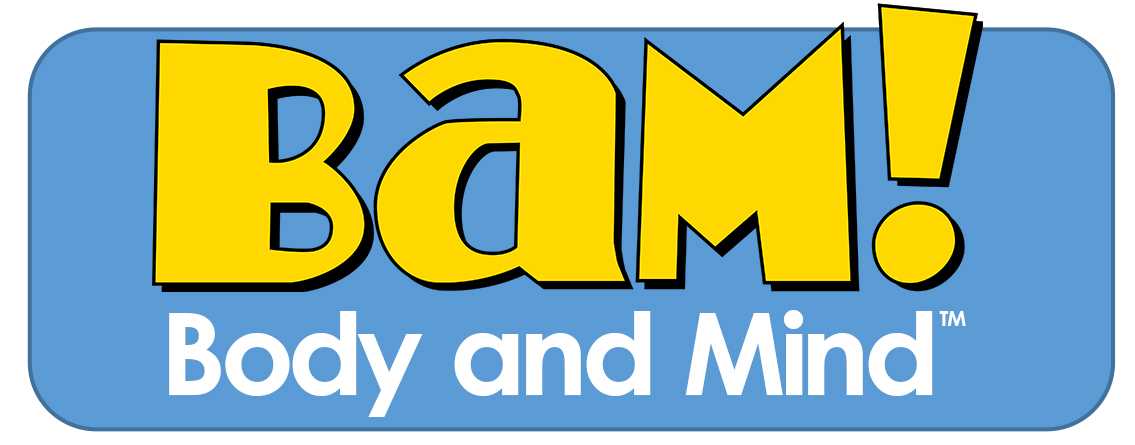
 ShareCompartir
ShareCompartir